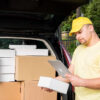Everyone should have a bug out bag.
It isn’t paranoia, an over-reaction, or reserved for Rambo-esque would-be warriors yearning for a chance to go wild.
Indeed, the government itself recommends you have one. We’d simply add a thing or two to what they suggest you bring…
Call them what you like. Bug out bags, 72-hour kit, get out of dodge (GOOD) bag…Whatever. They’re all synonyms for the same thing.
This is your emergency response kit. It’s the pre-assembled bag of emergency gear and supplies that can make or break your ability to survive a disaster.
You might be prepping for a terrorist attack, natural disaster or the apocalypse. It doesn’t matter. It simply pays to have these kits safely packed and ready to go.
But you can’t take everything. In fact, bug out bags are generally meant to cover the first 3 days of a large-scale disaster only. What should you include in it?
Keep reading for the essential bug out bag list of equipment and supplies.
The Ultimate Bug Out Bag List: 9 Essential Items
Bug out bags can be the difference between life and death in an emergency situation. Being prepared for a disaster is one way to mitigate its potential impact.
Whether you’re a Canadian prepper, American prepper, British prepper, or whomever, below are 9 essential things to include in your emergency bag.
1. Enough Fluid
Your emergency kit should contain enough clean water.
Remember, after a few days without water you’re unlikely to survive.
Many disaster situations can impact your access to it. For example, natural disasters can contaminate local water sources through sewage leaks and so on.
You might not be able to carry all that much fresh water.
That’s why your kit should have a means of filtering water on the go. A filtration system and/or a means of treating the water to turn dirty water into drinkable water is essential. Likewise, you need something to store it in. Pack a good quality water bottle or bladder.
2. Proper Shelter
Having a form of shelter stowed in your bug out bag is almost as important.
You never know what’s going to happen. Your home may no longer be inhabitable. You might have to flee the area in a hurry. The surrounding area may become your new home.
A high-quality, waterproof tent, bivy bag or tarpaulin (at the very least) will come in handy. Similarly, think about packing a sleeping bag and roll mat for additional warmth and comfort at night.
3. Sufficient Food Supplies
Most people can survive for some time without food.
But that doesn’t mean you shouldn’t include a sufficient supply of rations in your bag. After all, you’ll be expending much-needed energy. It’s important to keep up your calorie intake.
Small, non-perishable, protein-rich, nutrient-dense food sources are best. Canned goods last a long time but they’re heavy as hell. You don’t want to be carting them around with you.
Similarly, think about a means of catching food as you go. A fishing line and hook, or a hunting rifle (more on weapons later) may be vital lifelines for extended periods without food.
4. Appropriate Clothing
Take enough clothing to last you three days.
But remember this is a survival situation. We’re not talking about your typical three days worth. Your clothing needs will be vastly different.
You don’t need variety, matching colors, and multiple items. It simply doesn’t matter if you smell! Simply pack one change of clothing to cover the basics. However, your particular environment absolutely will be important.
For example, colder climates demand warmer gear. Gloves and hats, thermal layers and thick coats may be required. A quality waterproof jacket is always beneficial too.
5. Light and Warmth
Expect power outages.
You’re going to need a way to see and stay warm in the night time. First, let’s cover lighting. A flashlight, headlamp and chem lights are all viable options that you should include.
Now, warmth. You’ve already got your shelter covered, and clothing to keep you warm during the day. But it always pays to be able to light a fire. Pack fire-starting paraphernalia. A lighter and matches, as well as fire-starters, will all be essential items.
Fire serves multiple purposes. You can see better around your camp. You’re more likely to fend off dangerous animals. You can cook on it. And you can warm yourself too.
6. Means of Contact
Your mobile phone may not have a signal. The internet connection may be down.
Having a radio-transmitter can make all the difference.
Disaster zones can isolate you from family, friends, community and wider society. Having a means of communicating with the outside world can save your life. You can learn about the situation, ask for help, and talk with fellow survivors.
7. Emergency First-Aid
All bug-out bags need a well-stocked, basic first aid kit.
You’re likely to get cuts and bruises at some point throughout the process. However, there’s always the potential for more serious injury. It’s vital to have a means of coping any personal harm that occurs.
Think anti-bacterial wipes, strong pain-killers, band-aids, bandages, gauze, scissors, safety pins, medical tape, forceps, sunscreen, and so on. It’s better to be over-prepared than underprepared with a first aid kit.
8. Self-Defense Tools and Weapons
You may need to defend yourself. There’s not much more to say.
For non-lethal options consider taking pepper-spray and a baton. However, knives, guns, and rifles are also potential items to include. Just be wary of weight, and ensure you know how to use whatever you pack.
9. Miscellaneous
With the essentials out of the way, there are additional items to consider.
A multi-tool can come in exceptionally handy.
Likewise, be sure to have vital documents, such as your ID, passport and pictures of loved ones in case of separation.
An ax can be a useful weapon to help with making shelters. Duct tape serves a myriad of purposes. And a folding saw can come in helpful too.
Time to Get Packing
There you have it: 9 essential bug out bag list items to ensure you’re prepared for an emergency situation.
Everyone should have one of these kits on hand in times of disaster. You never know when it might strike. It’s for that reason that the government itself suggests you do it!
The trickier thing is deciding what to include. Hopefully, the items on this list will help you prioritize and prep effectively.










